GI5 (Gurkha Issue 5th)
¥ 3,900.00 – ¥ 4,500.00
| 默认规格(1英寸=2.54厘米) | |
| 刀片尺寸:10.25英寸 | 手柄尺寸:5英寸 |
| 刀片材质:高碳钢5160 | 手柄材质:牛角 |
| 刀片工艺:涂层 | 手柄工艺:未抛光 |
| 刀刃锐度:开刃 | 刀刃硬度:55-57 hrc |
| 刀片厚度:8毫米 | 刀鞘材质:牛皮 |
| 附随刀具:有 | 刀身重量:530克 |
| 总体重量:750克 | 发布日期:未知 |
| 原产地:尼泊尔 | 发货地:尼泊尔加德满都 |
The reigning CHAMPION yet largely underrated, from late 1950 to 1990 till date; a raw service kukri ..
现任冠军,虽然在 1950 年至 1990 年间被低估;这是一把原始的服务廓尔喀弯刀。
GI5 (Gurkha Issue 5th) ; A raw service kukri
GI5(廓尔喀问题第五期);一把原始服务廓尔喀弯刀
The reigning CHAMPION yet largely underrated >> MK5 or GI5 (KHHI’s version) .. “MUST READ (buy)”
现任冠军却常被低估 >> MK5 或 GI5(KHHI 的版本).. “必读(购买)”
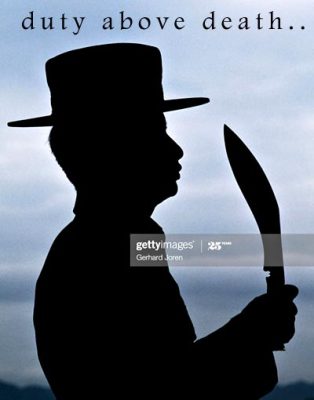
The issue of the kukri started to the “Brigade of Gurkhas” after Indian Independence in 1947 in late 1950’s. It is the longest surviving British Standard Issue (BSI) kukri whose reign ran across for almost 4 decades. GI5’s exact pattern was used from ca 1958-1960 to 1990’s and its variants are still active today (current year) in the army. However the kukri was largely overshadowed by the reputation, significance and discussions of various early Gurkha Issues like the MK2, MK3 etc. Variants of GI5 are still issued today even after 70 years in the service proves the essential value of the knife. After the 2nd World War and with the modernization and advancement of military gears the khukuri’s primary role as a main weapon was restricted to a mere back-up / utility knife (gear) or rather as an iconic symbol. Now the khukuri was seen more as an inseparable integrity of a Gurkha, his self-identity, a sign of courage, honor and pride, rather than a lethal weapon. Thus to continue the legacy and the amazing bond a service kukri in the form of GI5 was started from late 1950’s. The kukri was objected as a Dress Knife to carry in parade (kukri drill), on duty and other official military services. Blade size was reduced to 10 inch approx, style and shape was changed too. GI5s kukris were much simpler and very convention compared to its earlier counterparts. A few of them had very strange shape and many with inferior quality. It seems both the makers and receivers took the subject (supply) very lightly. It remains mystery and confusion as to its exact version, details and facts as it has been hardly documented or archived.
廓尔喀弯刀的问题始于 1947 年印度独立后的“廓尔喀旅”,并在 1950 年代末期持续发展。这是最长存活的英国标准发放(BSI)廓尔喀弯刀,使用时间跨越近四十年。GI5 的确切模式从 1958 年到 1990 年代被使用,其变种至今仍在军队中活跃(当前年份)。然而,廓尔喀弯刀在很大程度上被早期廓尔喀问题的声誉、重要性和讨论所掩盖,如 MK2、MK3 等。即使在服役 70 年后,GI5 的变种仍然被发放,这证明了这把刀的基本价值。 在第二次世界大战后,随着军事装备的现代化和进步,尼泊尔军刀作为主要武器的角色被限制为仅仅是备用刀具或多用途刀,或者说是一个标志性符号。如今,尼泊尔军刀更多地被视为廓尔喀人不可分割的象征,代表着他们的自我认同、勇气、荣誉和骄傲,而不再是致命武器。因此,为了延续这一传统和深厚的情感,从 20 世纪 50 年代末开始,服务廓尔喀弯刀以 GI5 的形式问世。廓尔喀弯刀被视为在阅兵(廓尔喀弯刀操练)、值勤和其他官方军事服务中携带的礼服刀。刀刃的长度约减少到 10 英寸,样式和形状也有所改变。GI5 的廓尔喀弯刀相比于早期的同类产品更加简单和传统。 有些物品的形状非常奇特,许多质量较差。制造者和接收者似乎对这个供应问题非常轻视。关于其确切版本、细节和事实仍然存在许多谜团和混乱,因为几乎没有相关的记录或档案。
Although GI5 was issued as a “Dress Knife”, supposedly to have well finishing and shiny, the khukuris was not up to the standard required for parade. Here it wouldn’t be an offence to write that GI5 was the weakest (poorest) of all Gurkha Issues. Recruits thus had to painstakingly clean the blade and scabbard during their entire nine months of recruitment training. Blades were roughly grounded, unpolished and black topped sometimes, and scabbards were made from raw buffalo hide. Recruits thus had to literally finish the khukuri with whatever resources available. This trend continued till late 1960’s after when soldier started to replace the raw hide by patent leather bought from local workshop at the suggestion of their superior. The blades however were mostly self-polished by the carrier.
尽管 GI5 被称为“礼服刀”,据说工艺精良且光泽亮丽,但尼泊尔军刀并未达到游行所需的标准。在这里,称 GI5 为所有廓尔喀刀具中最差的并不算冒犯。因此,新兵在整个九个月的招募训练期间不得不费力地清洁刀刃和刀鞘。刀刃粗糙,未抛光,有时顶部是黑色的,而刀鞘则是用生水牛皮制成的。因此,新兵不得不利用可用的任何资源来完成尼泊尔军刀。这种情况一直持续到 1960 年代末,士兵们在上级的建议下开始用从当地工坊购买的专利皮革替代生皮。然而,刀刃大多是由携带者自行抛光的。
Origin & production of 5th Gurkha Issue kukri knife
第五代廓尔喀问题廓尔喀弯刀的来源与制作
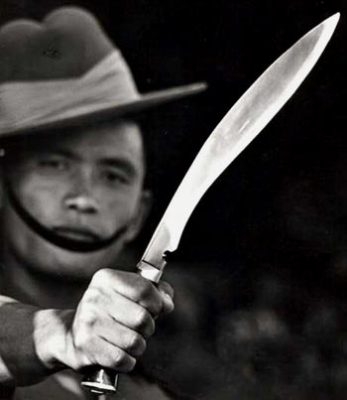
GI5 is the first issue (pattern) of its kind that originated (made) in Dharan, Eastern Nepal. In late 1950’s (ca 1958-60) production started there with the help of some army officials at “Dharan Recruitment Centre”. “Origin” and “Date” were stamped initially for a few batches but somehow discarded or ignored in later years but again done in 1980’s and again discontinued. Local contractors made inferior quality khukuris and supplied to the Army in thousands. Nonetheless the modern ones specially after 1990’s when 2 variants of GI5 were issued to a single recruit [#1 (Parade knife) and #2 (Training knife)] are much more better made, shaped and finished.
GI5 是首个此类问题(模式),起源于尼泊尔东部的达兰。1950 年代末(约 1958-60 年),在一些军官的帮助下,生产开始于“达兰征兵中心”。最初为少数批次盖上了“起源”和“日期”的印章,但在后来的几年中被忽视,直到 1980 年代再次进行,但又停止了。当地承包商制造了劣质的尼泊尔军刀,并以数千把供应给军队。然而,现代的尼泊尔军刀,特别是在 1990 年代之后,当时为单个新兵发放了两种 GI5 变体[#1(阅兵刀)和#2(训练刀)],制作、造型和精加工都大大提升。
The amazing legacy and feat of the Gurkha Issue Kukris of the formidable soldier is successfully and proudly carried by GI5 and handed over to the new generation.
廓尔喀士兵的廓尔喀弯刀所承载的辉煌遗产和壮举,已由 GI5 成功自豪地传递给新一代。
Besides its historic significance GI5 is also an excellent working kukri knife that would with no doubt hold a special place in the heart and mind of the user. It is an all-out all-purpose utility knife that carries the history and also has all the characters of an assault knife. It’s a well balanced kukri blade and made of the highest quality. The blade comes in RAW format to ditto reproduce the classic ones when they were first made for the army. Even the two accompanying knives, Karda and Chakmak, have the RAW black finishing.
除了其历史意义,GI5 还是一把出色的工作廓尔喀弯刀,毫无疑问会在用户心中占据特殊的位置。它是一款全能的多用途工具刀,承载着历史,同时具备攻击刀的所有特性。刀刃平衡良好,采用最高质量的材料制成。刀刃以原始状态呈现,忠实再现最初为军队制造的经典款式。甚至随附的两把刀,卡尔达和查克马克,也采用原始黑色饰面。
Size of Blade: 10-10.5 inches approx.
刀片尺寸:约 10 到 10.5 英寸。
Handle Size: 4.5 inches approx.
手柄尺寸:约 4.5 英寸。
Materials: Water buffalo leather scabbard, unpolished water buffalo horn handle, Raw Black finishing, 2 x small knives (raw black like the mother blade)
材料:水牛皮鞘,未抛光的水牛角手柄,原黑色饰面,2 把小刀(原黑色,类似母刀)
Origin: KHHI, Kathmandu, Nepal
来源:尼泊尔加德满都 KHHI
只有已购买此产品的登录客户才能发表评价。
相关产品
尼泊尔军刀

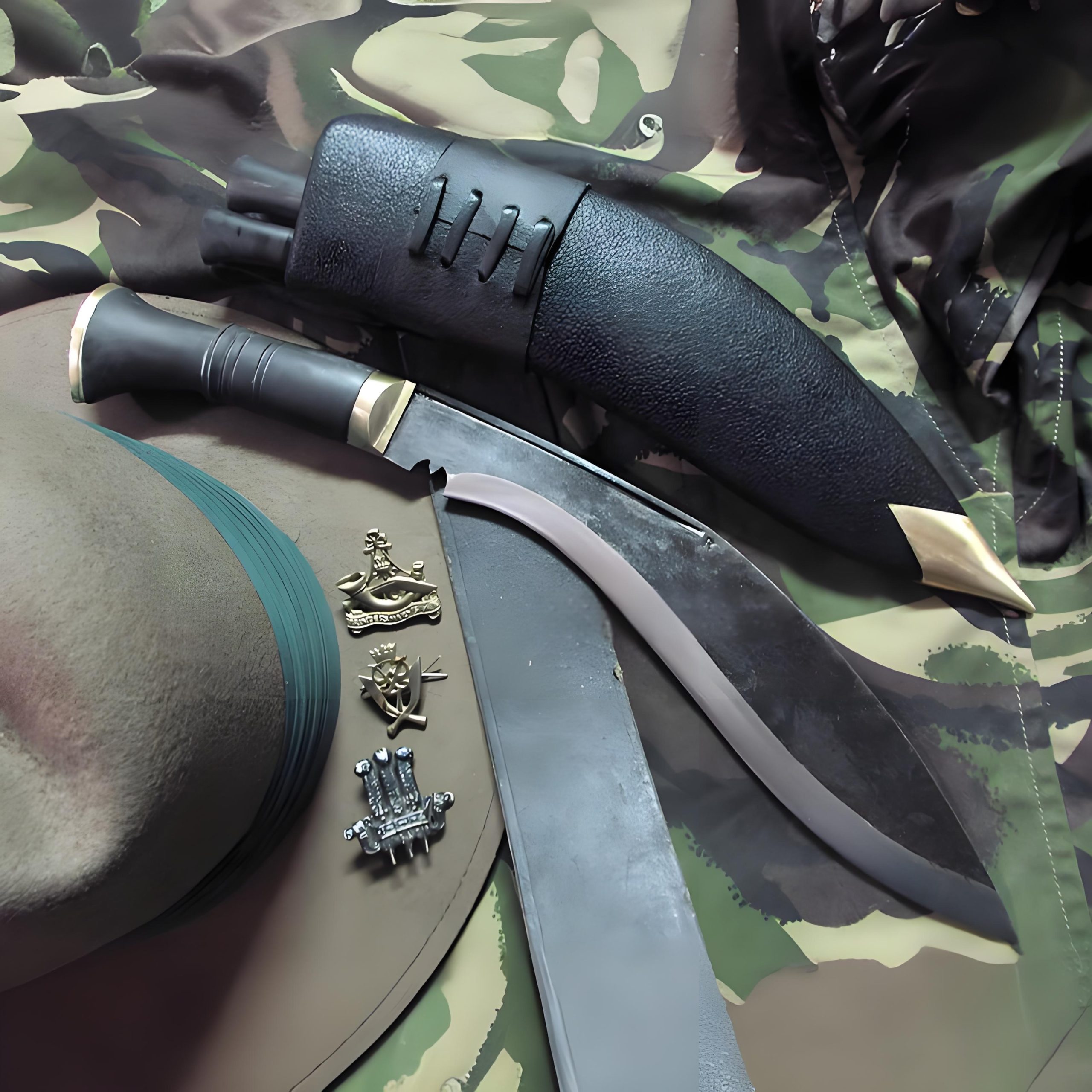
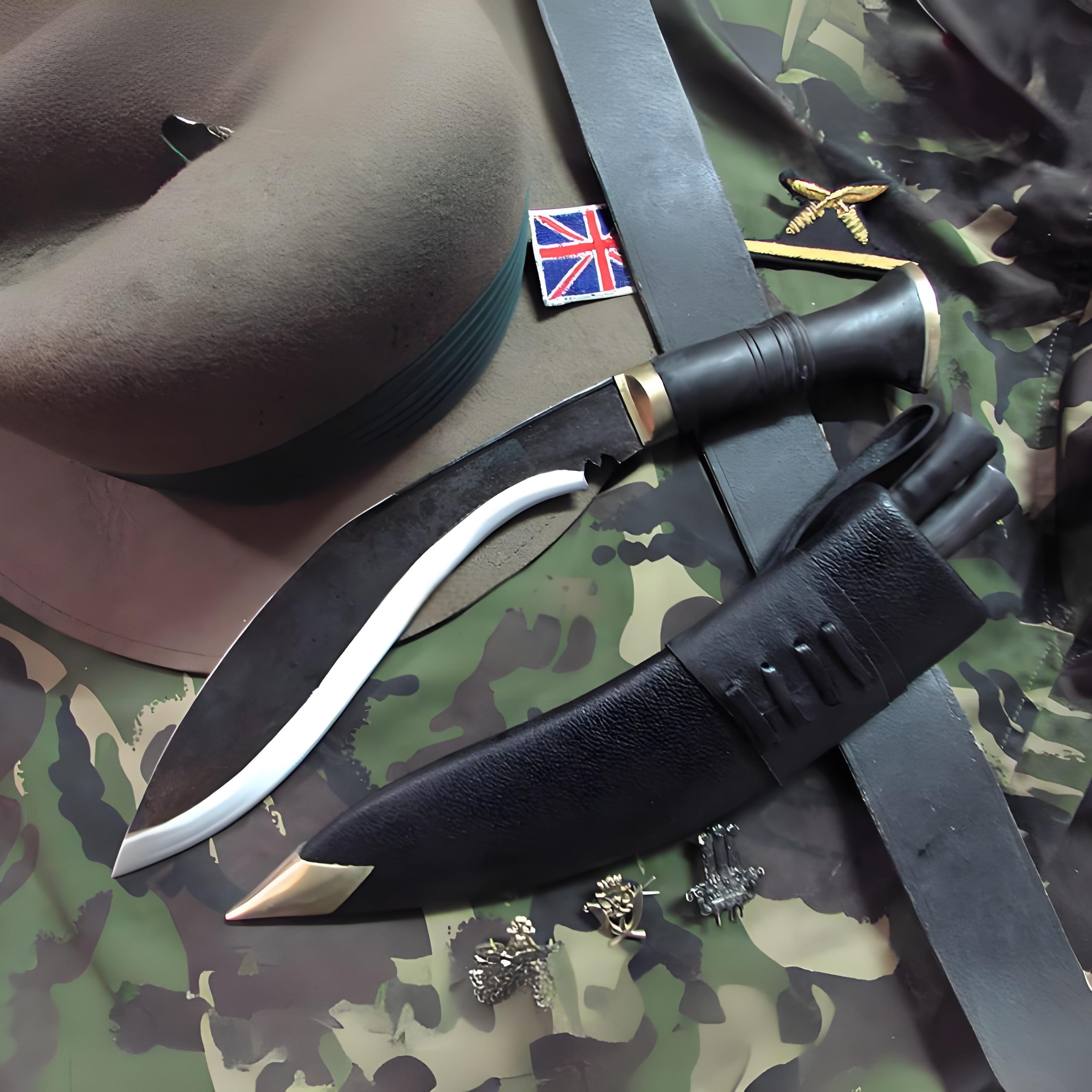
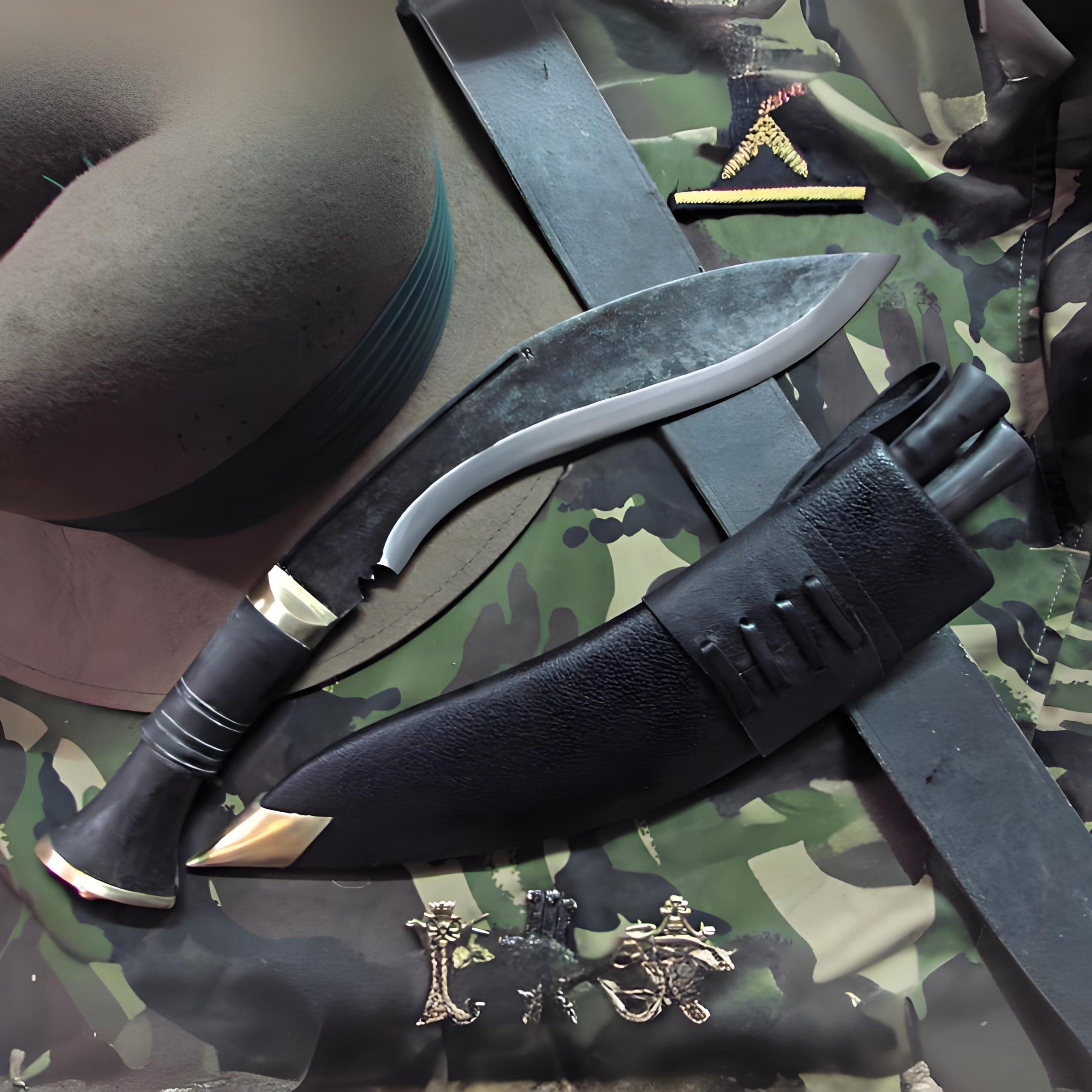
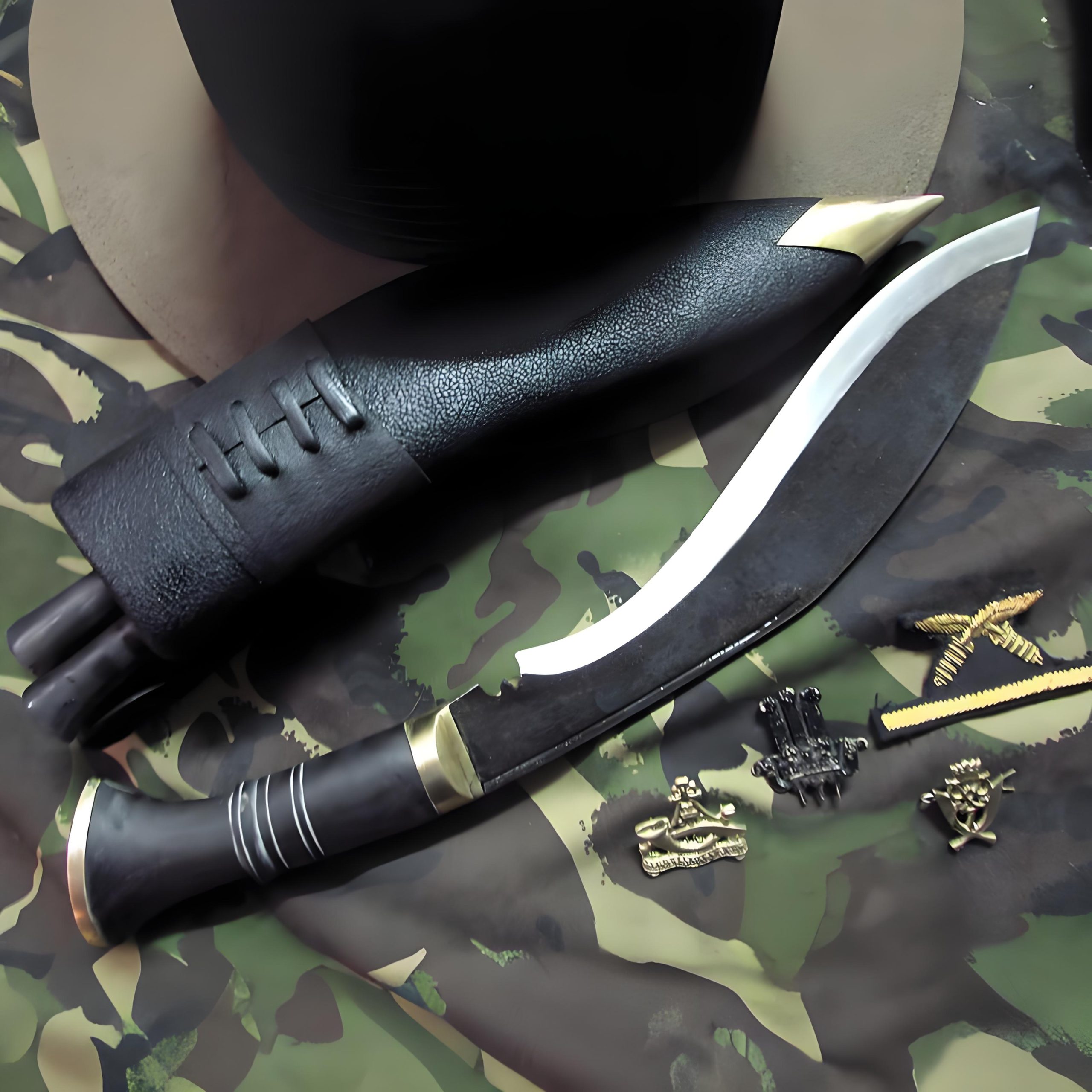

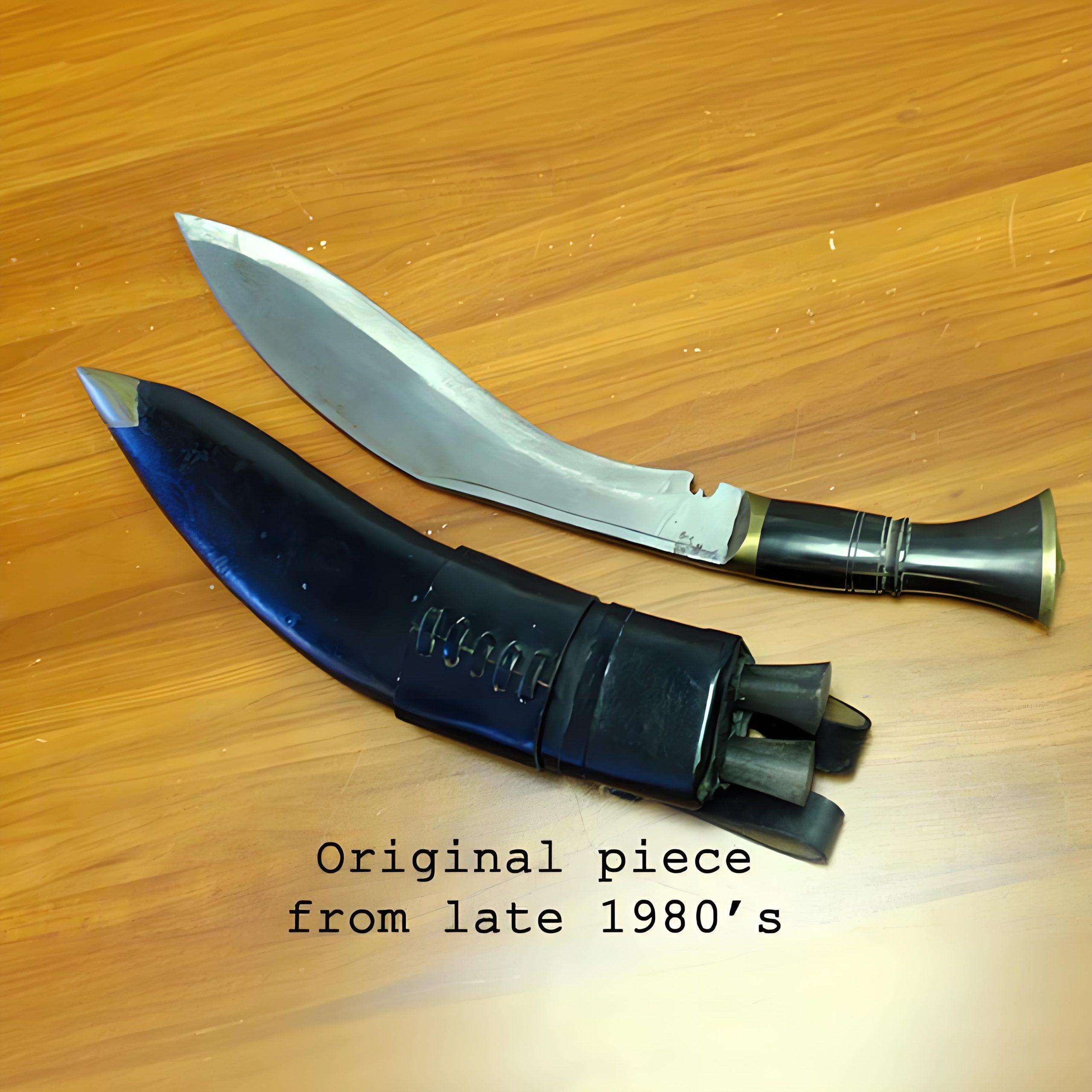
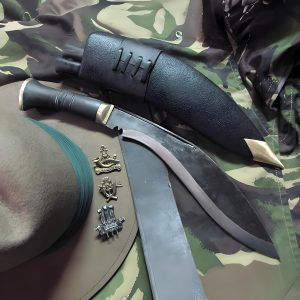
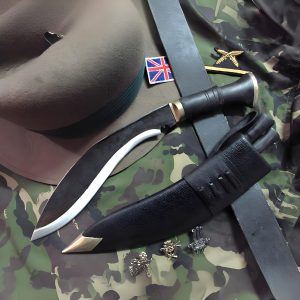
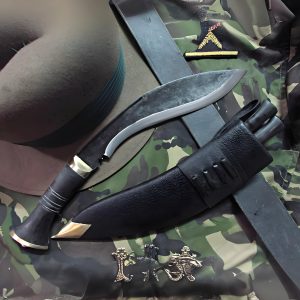
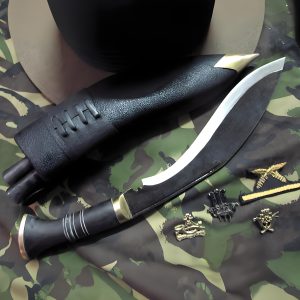
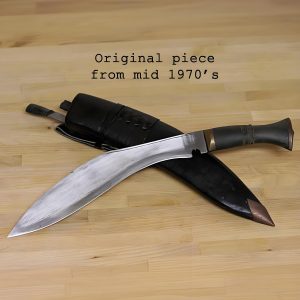
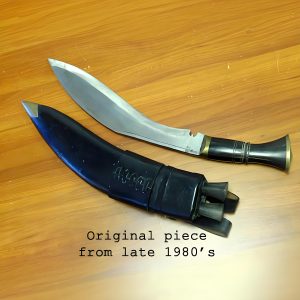
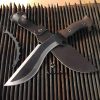


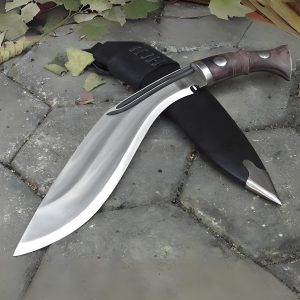
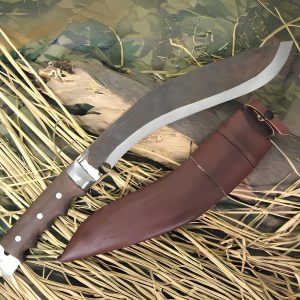
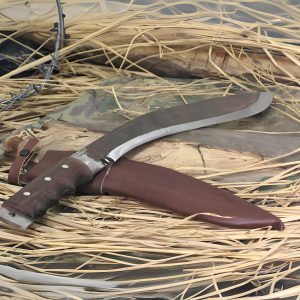
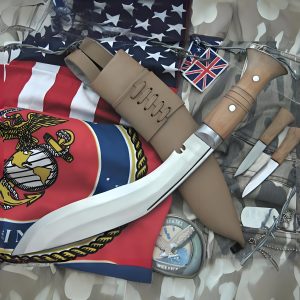
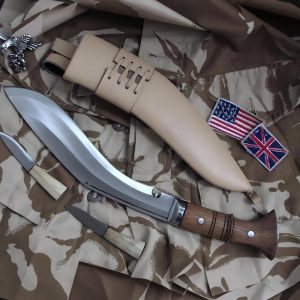
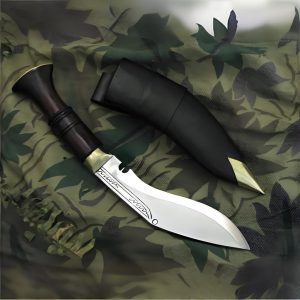
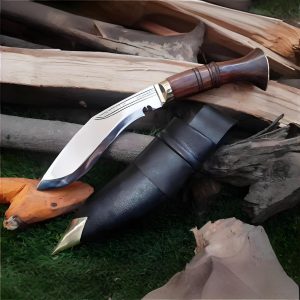
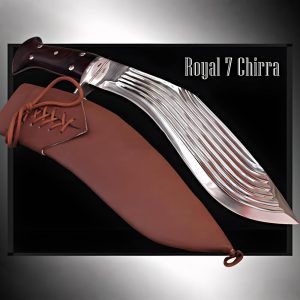

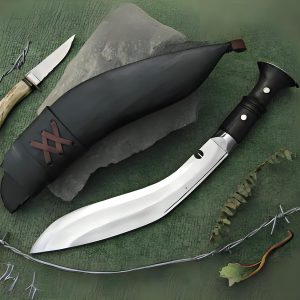
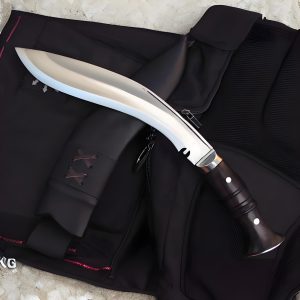
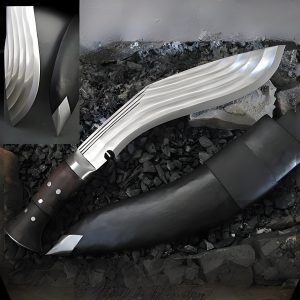
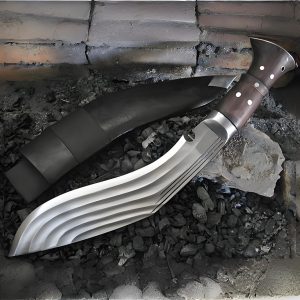
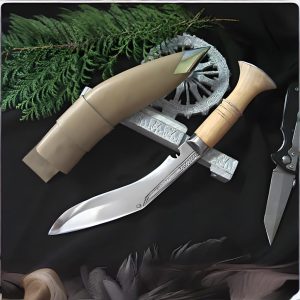
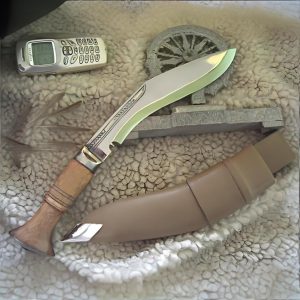
评价
目前还没有评价